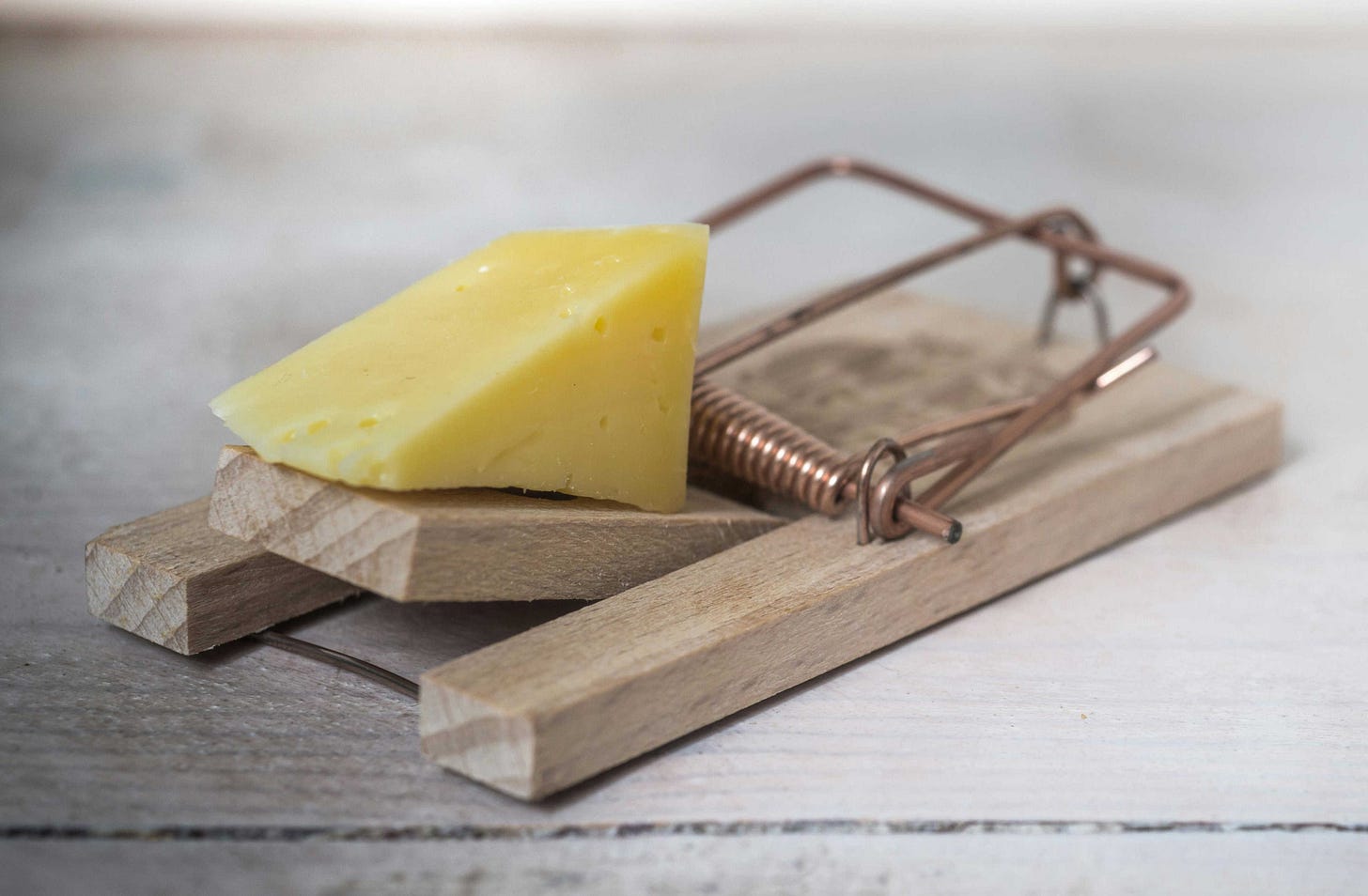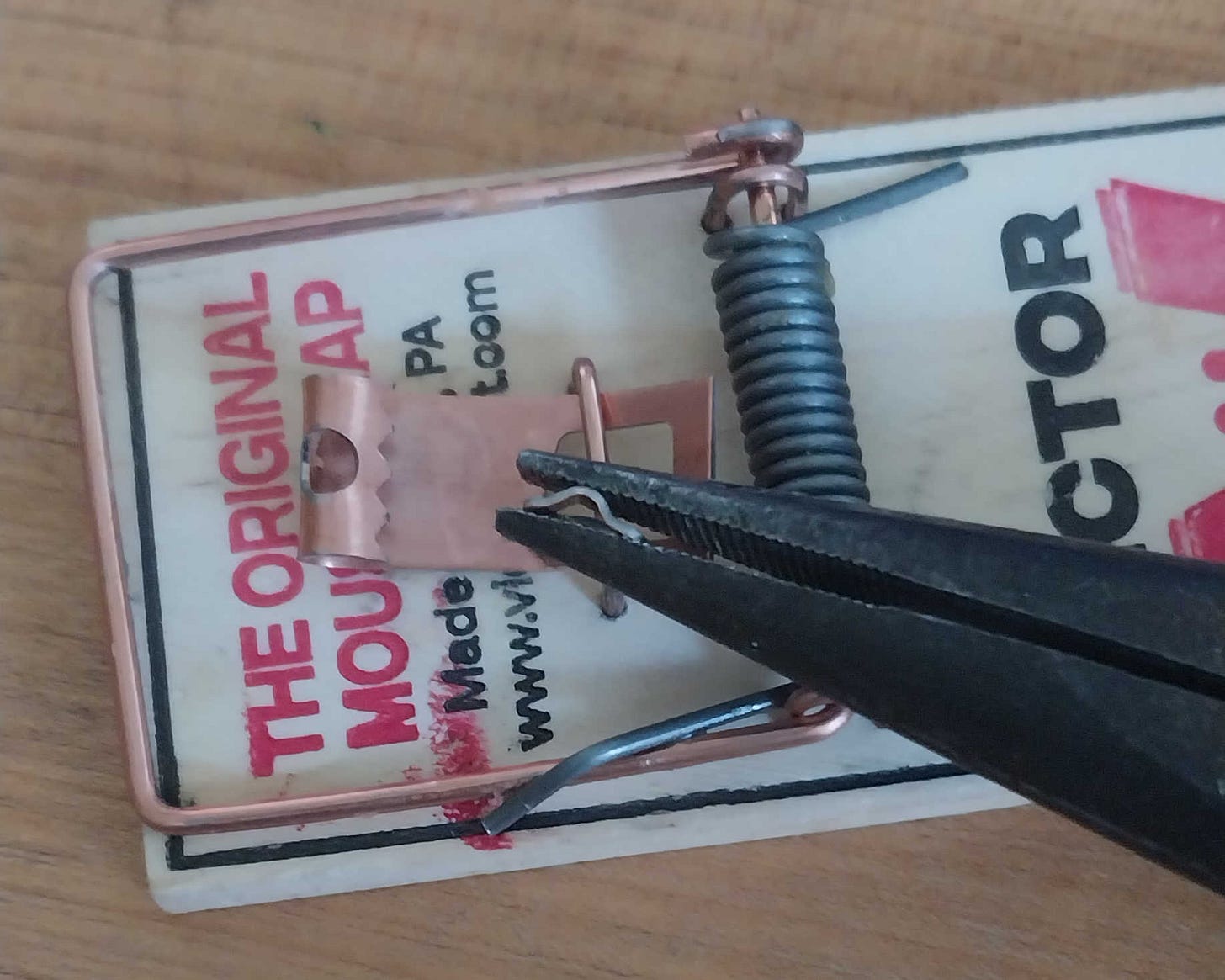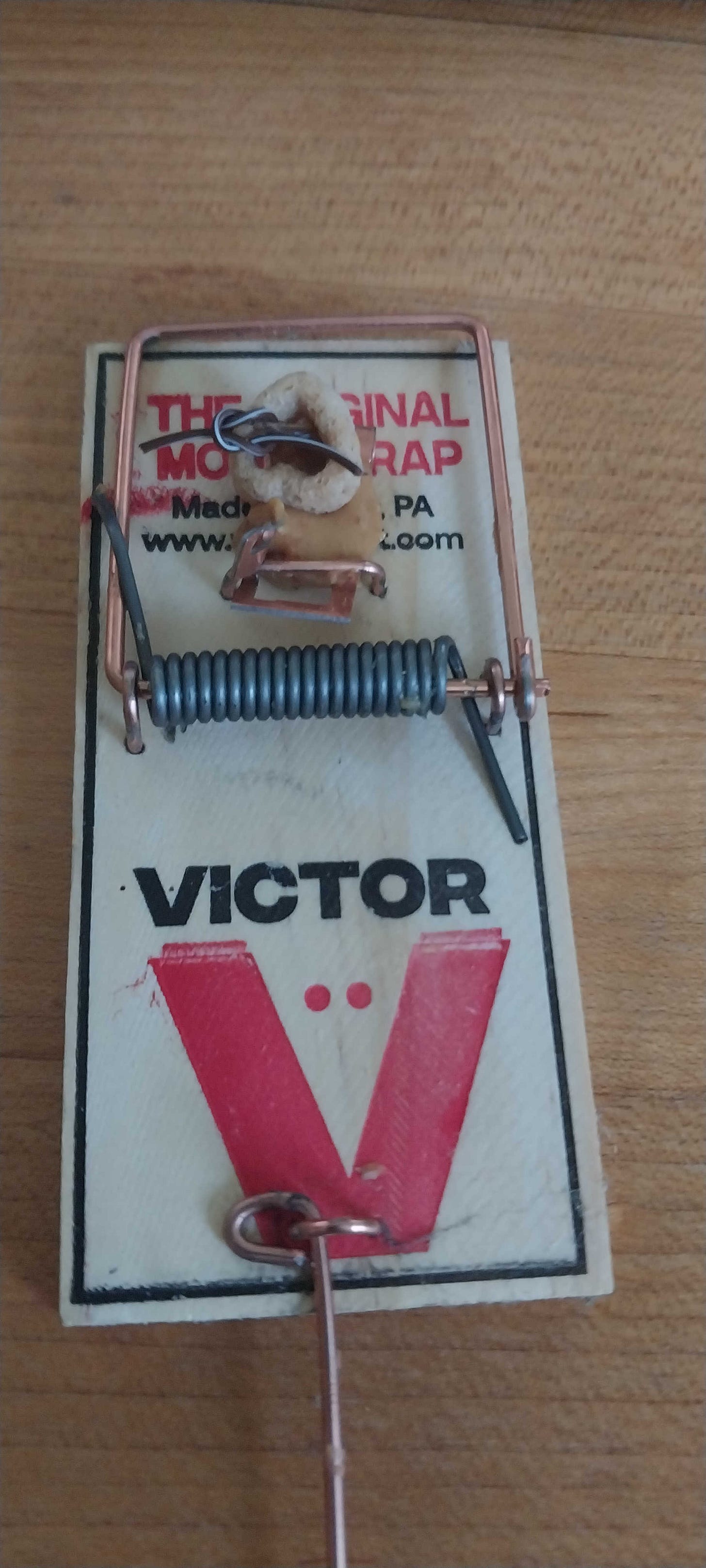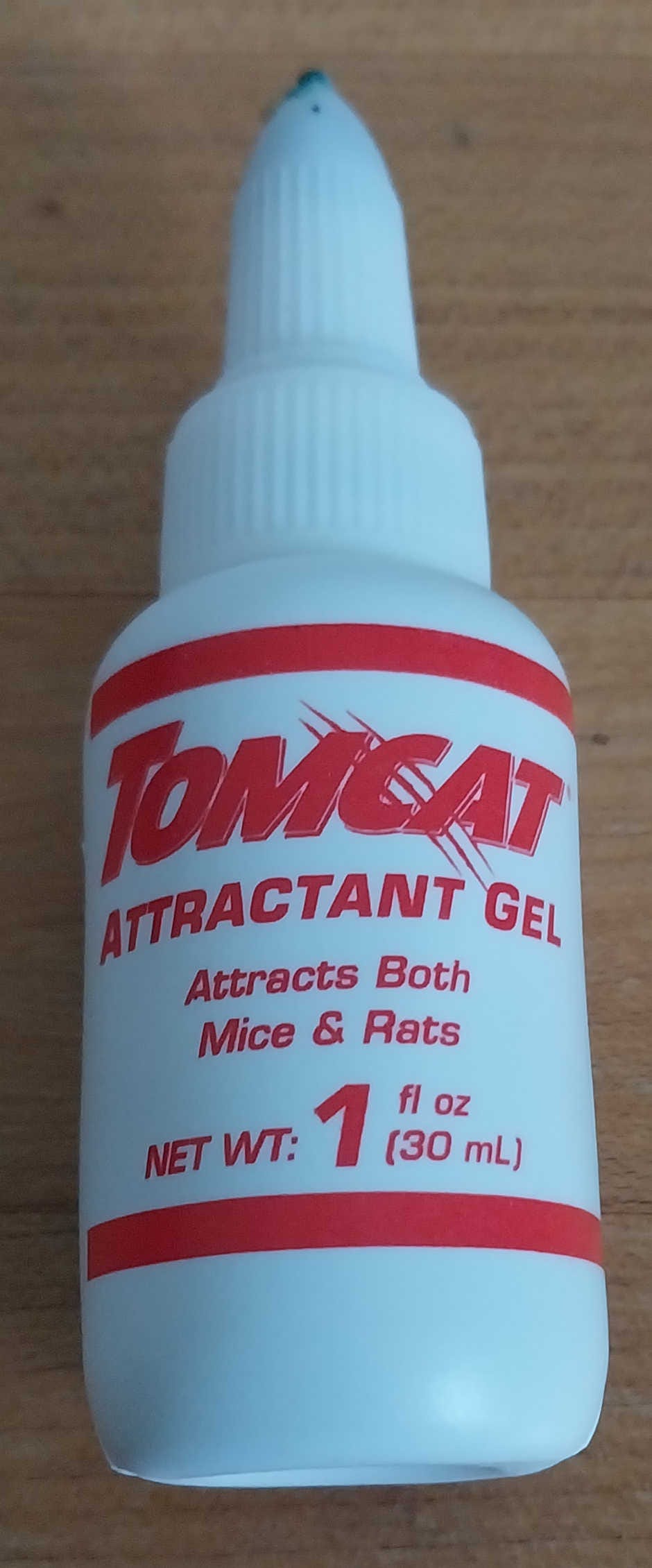Building a Better Mousetrap for Somerville's Clever Specimens
Or How I Caught One After the Off-the-shelf Options Failed

My city has a serious and growing rodent problem. It was likely inevitable, given that Somerville is New England’s most densely populated municipality.
So maybe I should not have been so startled, deep into our first pregnancy, when an uninvited little house guest made its first appearance late one night in our kitchen. It was the worst time for a disease vector to invade our home, and my first serious call to action as a dad to protect our soon-to-arrive baby girl.
The ensuing cat-and-mouse game tested my confidence as an engineer and my patience as a man. Generations of survival of the fittest, it seems, have adapted today’s urban mice either to avoid or rob common traps. Given the scope of the municipal issue, many families likely face similar challenges, e.g., traps left untriggered with their baits stolen.
Whether you have just noticed a mouse or spent days stressed, trying to catch one, I hope this saves you time, money and aggravation. My solution, below, is the result of significant experimentation.

I started with the smallest, cheapest mousetrap available at Home Depot, made by Victor Pest Control. Victor claims it is the “#1 choice of professionals.” As is, however, the trap proved ineffective for us.
To work, it required a strategy to tie the bait to the tray and a quick modification to the trap itself. You will need five things:
The traps
Jif Creamy Peanut Butter
Cheerios
Needle-nose pliers
Some string or copper wire, preferably brown (I used the brown conductor from some spare CAT-6.)
With these in hand—
Use the pliers to reduce—but not totally eliminate—the metal tab on the bait tray. This makes the trap more sensitive, but also harder to set and more hazardous—see the disclaimer, below. The goal is to leave enough protruding metal to hold the trap’s copper rod, but not so much that the trap fails to trigger.
Feed the string or copper wire through the hole in the center of the bait tray, then out the side.
Place some Jif on the bait tray. (This may be unnecessary, but it certainly seems to get the mouse’s attention where the Cheerio itself may not.)
Feed the wire through the center of a Cheerio.
Tie a good, tight knot around the Cheerio so the mouse can not pull the Cheerio without also pulling the bait tray.
Cut the excess string or wire from the knot.
Carefully set the trap.
Why this set up? (And what failed to work before I tried it?)
The morning after I saw the mouse I went to the Somerville Home Depot—where, nowadays, one occasionally sees a rat strolling the aisles. I bought a pair of the Victor traps because everything else seemed too big for the mouse I had seen. I baited them with Jarlsberg Swiss cheese. Then I waited.
And I waited.
Our unwanted houseguest apparently had picky taste. The cheese went totally untouched.
Next I tried Land O’ Lakes American cheese from the Market Basket deli counter, then rice pudding, chocolate pudding, even chicken and steak. No bites.
I had never used peanut butter in a mousetrap, so next I tried some Teddy’s. The mouse passed on it, too.
“Maybe we should call an exterminator,” my wife said.
“They’ll come,” I said, “set the same traps or drop some poison and charge us hundreds of dollars.”
With kids and pets all over the neighborhood and our own bun in the oven, poison was to be avoided if at all possible.
“Besides, I’ll not be the engineer outsmarted by a mouse.”
I kept experimenting with baits until I learned…
Choosy mice choose Jif.
Jif’s added sugar and “FULLY HYDROGENATED” oils—which I usually avoid—seemed the differentiating factor to tempt the mouse.
In any case, the mouse took the Jif twice without triggering the traps.
Wedged between M.I.T., Tufts and Lesley University, even Somerville’s mice seem well educated. At this stage of the citywide cat-and-mouse game, our specimen had apparently acquired the dexterity to not trigger America’s “#1” mousetrap.
On my next trip to Home Depot I caught sight of the store’s resident rodent roaming the plumbing section, and noticed but did not buy two things: 1) a “tamper resistant” poison system that claims it is safe around kids and pets and 2) a plug-in ultrasonic rodent repeller.
Instead, I bought a “no kill” trap that does not rely on a sudden trigger. In theory it allows the mouse to enter the trap but not exit. I baited it with Jif and American cheese and put it at the site of the previous peanut-butter thefts.
I know not whether the mouse entered the trap. I do know it failed to catch it.
Next I tried some glue traps and a special bait sold in a squirt bottle and marketed as non-toxic and irresistible to rodents. With the squirt bottle, I baited the old-school traps under the folds in their copper bait trays. That, I hoped, would up the odds the mouse would trigger a trap while extricating the bait.
I also tried the new bait in the no-kill trap.
The mouse neither stepped in the glue nor touched the fancy bait, at all.
Shortly thereafter, while grabbing a snack, I spilled a couple Cheerios on the floor. On the way to the trash to discard them, I decided to put them on the traps instead, atop the über bait.
What the hell? I thought. Maybe the size or mass of the Cheerio will make a difference in triggering the traps.
Alas, the mouse stole the Cheerios and again left the über bait untouched.
I, at that point, reluctantly considered using the “safe” poison system in the basement. Weighed against the passage of time and specter of a mouse-breeding cycle (or a second mouse-breeding cycle?), it was a tough call.
I had one last idea. I had established effective baits. The problem was that the mouse—it was very small—was too gentle to trigger the smallest trap I could buy.
I made two adjustments: 1) I used needle-nose pliers to make the traps more sensitive and 2) I used copper wire to tie a knot connecting the Cheerio to the bait tray. Unless the mouse ate around the knot, it would trigger the trap when grabbing the Cheerio.
I’ll spare you pictures, but suffice to say, it worked. It is impossible to know for sure, but it looked like the mouse pulled the Cheerio with its front paws, triggering the trap.
In any case, the mouse did not suffer. The trap did its job instantly.
And for those opposed to kill traps, the knot-through-the-Cheerio strategy may be adapted for no-kill traps too, but not the no-kill traps I saw at Home Depot. Just make sure there is something to which to tie the Cheerio.
I offer this post for educational purposes without any warranty of any kind, express or implied. This post contains no affiliate links and no one mentioned herein profits from the purchases of any of the mentioned equipment. By making use of this information, you agree to indemnify and hold harmless myself and all others mentioned herein from any and all liability.
Mousetraps are dangerous. Do not use them around children or pets. Catching fingers or toes in them may cause serious harm. Never use your bare hands or feet to adjust or trigger a trap once it is set.











